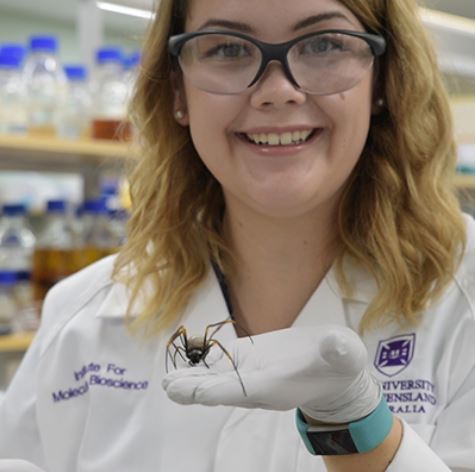
A photo has been captured of an opportunistic redback spider which has managed to entangle a young snake in it's web, along with an assortment of other dinner options, next to its resting egg sacs.
The image was taken recently by local man Darcy Johannesen who came across the scenario in Bundaberg.
Darcy said the redback spider was the biggest he had ever seen, with the rear end of the arachnid measuring larger than a 10 cent coin.
Bundaberg Now sent the photo to Sam Nixon, venoms scientist at The Institute for Molecular Bioscience, The University of Queensland, who had some interesting facts to share about the situation.
The researcher has been interviewed about spiders in Bundaberg previously when she identified that a massive redback, larger than a 50 cent coin, was in fact an orb weaver using mimicry to avoid predators.
Sam said this most recent photograph showed a decent-sized adult, female redback spider (Latrodectus hasselti) with what appeared to be a dried-up, dead juvenile snake.
“The round things in the back of the picture are her egg sacs – redback spiders often lay several,” she said.
“Each one would contain many individual eggs, in the range of hundreds.
“The other smaller spiders are probably dead spiders that have also been caught and eaten.”
Sam said redback spiders laid down “tangle webs” which had lots of lines of silk in both vertical and horizontal directions.
“These silk strands are coated in very, very sticky droplets that are like glue, which make them very effective for catching prey,” she said.
“The droplets are sticky enough to catch small insects, bigger insects like cockroaches and even larger prey.”
Snakes a big meal for a redback spider
Sam said while snakes were definitely not the main prey of choice for a redback spider, it wasn't impossible.
“These sorts of photos pop up on social media from time to time, so it does happen on occasion,” she said.
“Redbacks are opportunistic predators.
“They have a wide diet that includes pretty much whatever they can catch. There are even reports of them eating small rodents.”

Sam said redbacks would tackle a snake meal by injecting digestive enzymes to help break down the tissue.
“However, that one redback would have a hard time getting through that whole snake,” she said.
“The snake has probably dried out and decayed after being bitten and dying.”
Sam said the spiders were unique creatures and contained venom full of proteins with neurotoxic effects, which act quickly on their other prey.
“They are one of the spiders that we consider medically significant, i.e. capable of causing serious effects in humans after envenomation,” she said.
“There have been no deaths directly from redback spider venom since the introduction of antivenom.
“They are usually quite shy spiders that will stay in their web – but because they live in urban areas, often under wheelie bins, pot plants, in piles of junk etc – there is a risk of contact with humans.
“If bitten, seek medical attention.”




